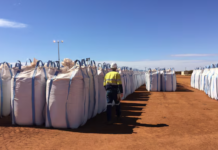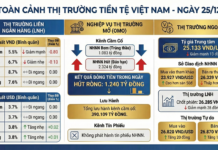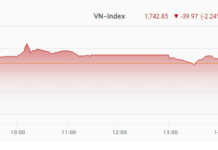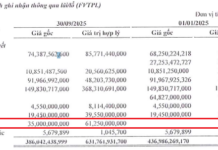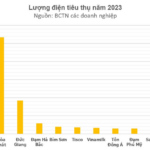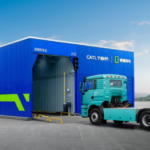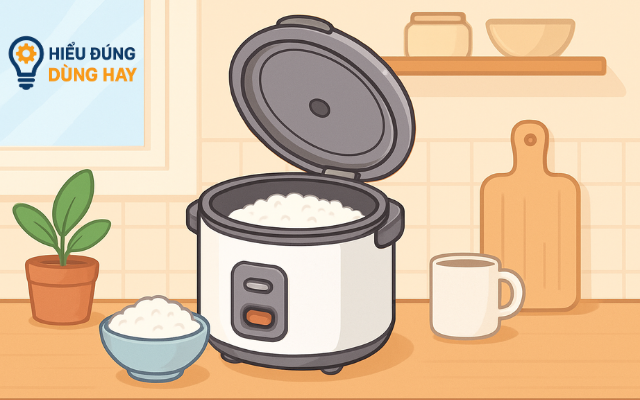
Rice cookers have become a familiar appliance in most Vietnamese households. While they may seem simple and easy to use, many incorrect usage habits are causing rice cookers to become silent “electricity guzzlers,” increasing electricity bills without people realizing it.
One of the most common misconceptions is leaving the rice cooker plugged in from early morning until late at night, expecting the rice to still be hot. Users find this convenient as it saves time and ensures that a hot meal is always ready. However, according to the Vietnam Electricity Group (EVN), the rice cooker’s keep-warm function still consumes electricity, albeit at a low level. The longer the keep-warm function is used, the more electricity is wasted, and the rice may become dry or spoil. A more sensible solution is to cook rice only 30-45 minutes before mealtime, ensuring fresh and tasty rice while avoiding unnecessary electricity consumption.
Many families also make the mistake of choosing the wrong cooker capacity. The habit of buying a larger cooker “to be safe” can sometimes backfire. A bigger cooker consumes more electricity, and if the cooking needs are small, energy is wasted. EVN suggests that for a family of 2-4 people, a 1-1.5-liter cooker is sufficient; for 4-6 people, a 1.6-2-liter cooker is appropriate; only for larger families should a bigger cooker be considered. Choosing the right size cooker not only saves electricity but also ensures that the rice cooks evenly and tastes better.
Another often-overlooked detail is the cleaning of the rice cooker. Over time, the heating plate, inner pot, and steam vent can accumulate rice residue or dust. This buildup reduces heat conduction efficiency, forcing the cooker to use more electricity to cook the rice. Therefore, periodic cleaning and drying of the electrical contact parts become a simple yet effective way to save energy.
Additionally, many people are unaware that simply changing their rice-cooking habits can lead to significant electricity savings. According to EVN, soaking the rice in warm water for 10-15 minutes before cooking can soften the grains, leading to faster cooking times. This not only reduces electricity consumption but also results in more fragrant and sticky rice.
From these seemingly minor details, it is clear that the rice cooker can have a significant impact on monthly electricity bills. By using the appliance correctly, users can maintain meal quality while substantially reducing their living expenses.
With rising electricity prices and increasing consumer demands, changing simple habits – such as cooking rice closer to mealtimes, choosing the right cooker size, regular cleaning, and soaking rice before cooking – becomes the key to making the rice cooker a truly “useful” appliance, rather than a hidden burden on the family’s electricity expenses.
The Power of Words: Captivating Copywriting for a Capital City’s Energy Crisis
The Hanoi Power Corporation advises residents to be mindful of their electricity usage habits to avoid unexpected spikes in their bills.
Does Turning Your Air Conditioner On and Off Immediately Use More Electricity? Debunking a Common Misconception
The use of air conditioners has become a staple in many households, yet not all users are aware of the simple tips and tricks to utilize this appliance efficiently and economically.


